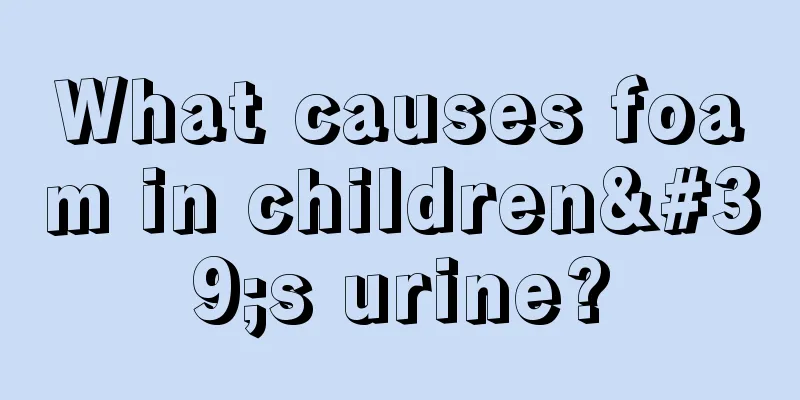Examination of recurrent fever in children with pneumonia

|
In fact, in daily life, many parents are busy with their work and want to give their children a better growth environment, but this will lead to poor care and cause illness. So let us learn about the examination of repeated fever caused by pneumonia in young children. General treatment requires bed rest, eating easily digestible foods rich in protein, electrolytes, and vitamins, and paying attention to water replenishment. Physical cooling should be given to those with high fever. Children with milder symptoms can use some antiviral and anti-influenza drugs on their own. Common ones include pediatric lung heat, cough and asthma oral liquid, which combines the core formula of Ji Ma Xing Shi Gan Tang and Shuang Huang Lian in one, and is combined with Isatis root and Houttuynia cordata. It is not only effective in preventing and treating colds and influenza, but also has the effects of clearing away heat, detoxifying, and promoting lung function. It is the first drug in the country to treat and prevent influenza in children. If the high fever lasts too long and does not subside, you need to see a doctor to avoid worsening of the condition. 1. X-ray chest film shows reticular shadows in both lungs, thickened and blurred lung texture. In severe cases, diffuse nodular shadows can be seen in the middle and lower fields of both lungs. Consolidation is rare. 2. Blood test: The white blood cell count is generally normal, but may be slightly higher or lower. In case of secondary bacterial infection, the white blood cell count and neutrophil count may increase. 3. Etiological examination: Virus culture is difficult and not easy to carry out routinely. If the sputum smear of pneumonia patients only finds scattered bacteria and a large number of nucleated cells, or no pathogenic bacteria are found, the possibility of viral pneumonia should be suspected. 4. Serological examination: Two samples of serum from the acute phase and the recovery phase. An increase of 4 times or more in the antibody titer of the complement fixation test, neutralization test or serum inhibition test is of diagnostic significance. In recent years, the use of serum to monitor virus-specific IgM antibodies has helped in early diagnosis. Immunofluorescence, enzyme-linked immunosorbent assay, enzyme-labeled histochemistry, horseradish peroxidase-anti-horseradish peroxidase method, etc. can be used for virus-specific rapid diagnosis. The above article gives you a detailed introduction to the examination of repeated fever in children with pneumonia. I believe everyone has a relatively preliminary understanding. Therefore, in daily life, if such a phenomenon occurs, the most fundamental thing is to reduce the fever first. |
<<: Nursing methods for children with pneumonia
Recommend
What is the fastest way to drown the neck?
When the folds of our skin become red and rotten,...
What are the contents of early education for six-month-old babies?
Many babies need to pay attention to early educat...
How to take care of children with cold and fever
When children have a cold or fever, they need pro...
What to do if your child keeps coughing?
What to do if a child keeps coughing? Every paren...
How to care for a four-month-old baby
The baby's body is very fragile, and the baby...
Your child's urine is red
Have you noticed that the urine we excrete change...
How to generally treat vitiligo in children
Children have relatively low immunity and are par...
Should I cover my baby with a blanket if he has a low fever?
When babies have a fever, they look particularly ...
Reasons for frequent feeding of babies
Many parents are taking care of their children fo...
What should I do if my child has a cold and fever?
Colds are a very common disease in children. They...
How to teach a disobedient child?
Disobedient children always cause parents compari...
What should I do if my child doesn't cough during the day but coughs at night?
Sometimes it is very worrying for adults when chi...
What kind of water is good for children with fever?
In fact, the issue of children's fever still ...
What to do if baby's lower eyelid turns blue
Every baby is an angel in the family, and the hea...
What to do if your baby has a runny nose and sneezes
If some babies have abnormal phenomena, they need...









